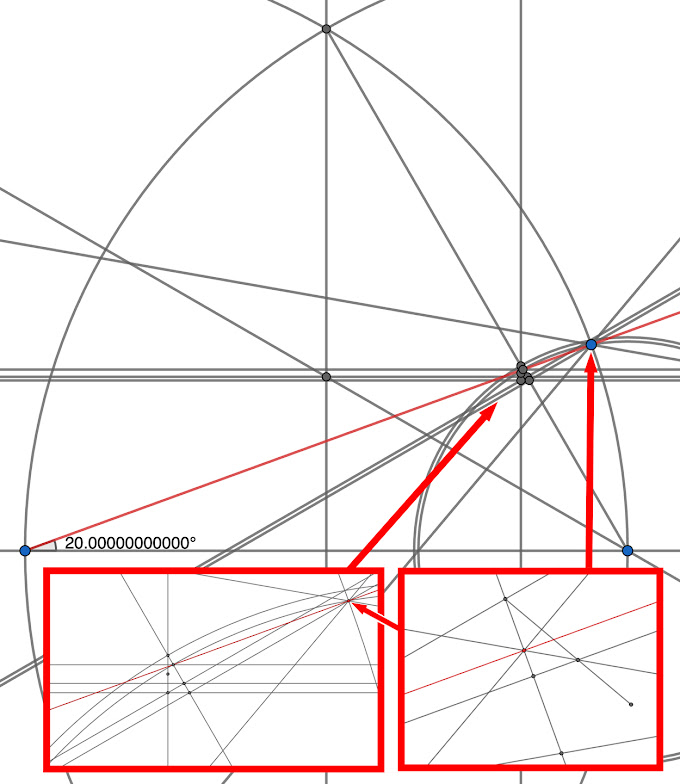60° Trisection Goes Big!
Magnified Details of the 60° Trisection—
I found a way to trisect a 60° angle with euclidean construction simulated on a computer using GeoGebra's interactive geometry software. The software allows a user to zoom into the construction and create minute structures, which under the rules, any size is acceptable. GeoGebra's drawing board displays Cartesian coordinates, which in the following examples were defined as centimeters to provide a sense of scale.
The original objective of the construction was to define length disparity from one third of the primary angle's chord to that of its arc, which also defines the angle. The construction employs a sequence of three linear thirds to reach the goal.
With the 60° primary angle having a base width and arc radius of 14 cm, the construction culminates with operations executed within a cluster of three intersections grouped smaller than a single E coli bacterium, an estimated size of 2.5 microns. If this construction were drafted with the finest pen and using magnifying lenses, one would have been hard-pressed to distinguish it from a single-point intersection.
An adjacent segment of less than a half micron is trisected to yield the constructed Point U, which measures 20.000000000000000°, one third of the primary angle. A reference Point B' is placed by the software on the arc at exactly 20° for verification. It is indistinguishable from Point U, even with the software's magnification of 3,000,000x.
However, Point U and Point B' do not overlap. The magnification was increased by the software to obtain a closeup view of the common angle arm where it terminates at Point B'. At a magnification of 280,000,000,000x, each point becomes distinct and both denote the same 20° angle in collinear alignment, with less than one picometre separation, a gap smaller than a hydrogen atom.
This illustrates the disparity in size required for this solution and may account for the presumed impossibility of angle trisection in the past. It also illustrates the power of the computer and that 60° Euclidean angle trisection is indeed not impossible.
At the maximum simulated magnification, constructed Point U and reference Point B' are closer than one picometre and both are aligned on the blue ray defining the 20° angle. With Point U removed, the three lines intersect at the same point.
3,000,000x magnified view of the microscopic three-way intersection, which in a normal view appears as a single intersection, smaller than a bacterium.






Comments
Post a Comment